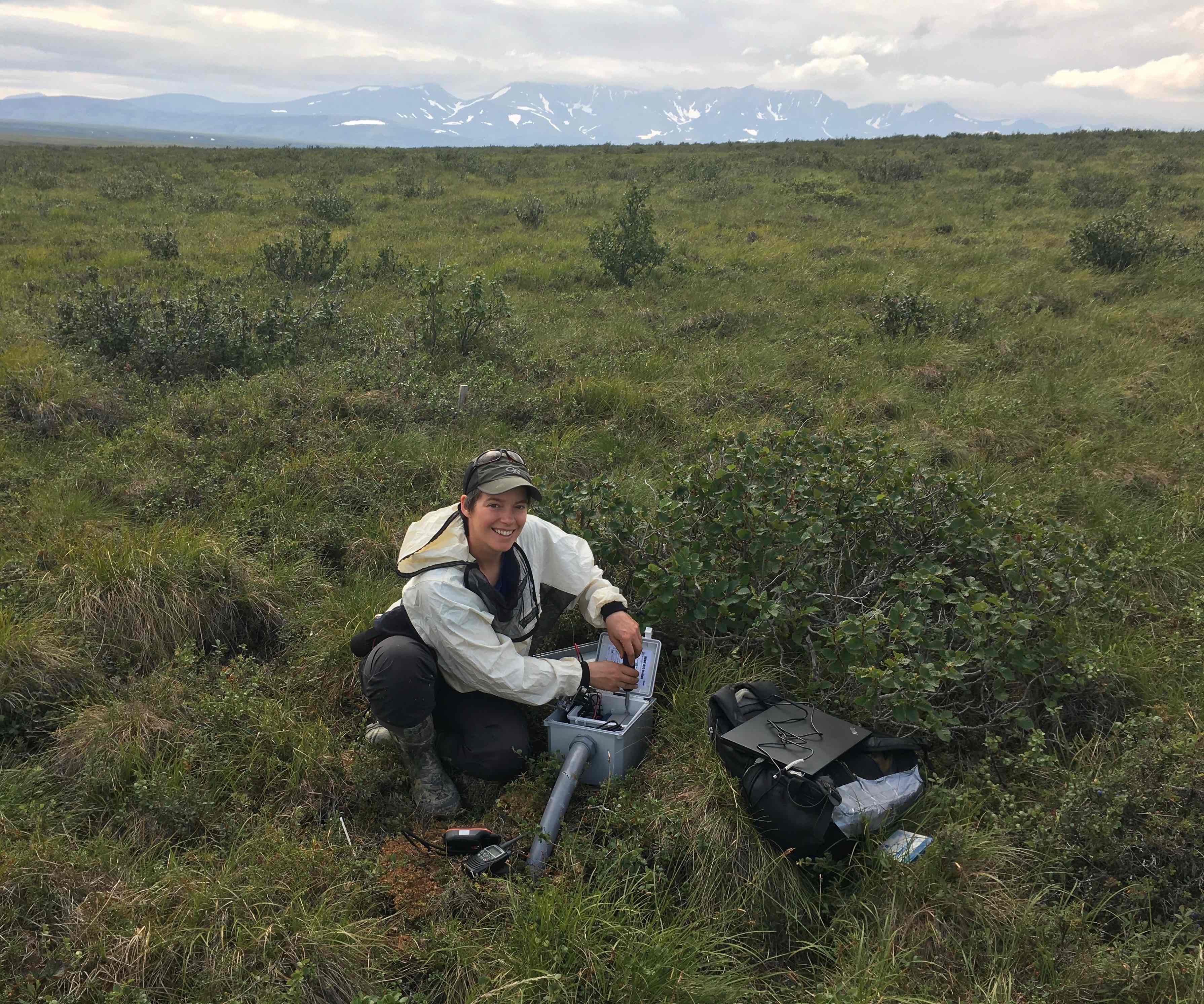Researcher finds AVņ«¬ŘŐ≥‚Äôs Arctic coastal towns face extensive inundation
Rod Boyce
907-474-7185
Dec. 17, 2021

Louise Farquharson, a research assistant professor at the UAF Geophysical Institute, checks a borehole near Nome on the Seward Peninsula.
University of AVņ«¬ŘŐ≥ Fairbanks scientists are presenting their work at the American Geophysical Union‚Äôs fall meeting in New Orleans this week. This article is part of a series highlighting UAF research from the world‚Äôs largest Earth and space science meeting.
Coastal erosion and land subsidence driven by permafrost thawing may lead to extensive seawater inundation in several northern AVņ«¬ŘŐ≥ communities by 2100, according to research by a University of AVņ«¬ŘŐ≥ Fairbanks geomorphologist.
Louise Farquharson, a research assistant professor at the UAF Geophysical Institute, made the long-term projections for the communities of Point Lay, Wainwright, Kaktovik and Utqiań°vik. Her work includes an assessment of the impact of gravel pads, which absorb warmth faster than the moss and peat of the region‚Äôs undisturbed land.
The research uses the worst-case scenario of the Intergovernmental Panel on Climate Change. It assumes no significant change in global carbon dioxide output.
Under that scenario, ground temperature increases in the communities Farquharson examined range from 10 to 14 degrees from 2020 to 2100 for terrain in its natural condition. Temperatures rise an additional degree where the ground is overlain by a hypothetical 4 feet of gravel for community development.
That leads to extensive permafrost thaw and a resultant subsidence of the land surface.
‚ÄúWhat‚Äôs interesting is that it does seem like inundation from the ocean is going to be a more significant process than just the coastal erosion of bluff tops,‚ÄĚ Farquharson said, noting her results are preliminary. ‚ÄúThe erosion rates are going to result in some land loss, but it's insignificant compared to how much land might be lost if we have as much inundation as our initial estimates suggest."
Farquharson worked in collaboration with Dmitry Nicolsky and Vladimir Romanovsky at the UAF Geophysical Institute Permafrost Laboratory.
The National Science Foundation funded the research.


